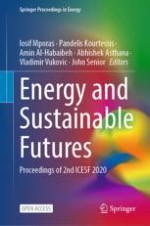
Open Access 2021 | OriginalPaper | Chapter
21. Recycling Mine Tailings for a Sustainable Future Built Environment
Authors : Surya Maruthupandian, Napoleana Anna Chaliasou, Antonios Kanellopoulos
Published in: Energy and Sustainable Futures
Publisher: Springer International Publishing
Activate our intelligent search to find suitable subject content or patents.
Select sections of text to find matching patents with Artificial Intelligence. powered by
Select sections of text to find additional relevant content using AI-assisted search. powered by